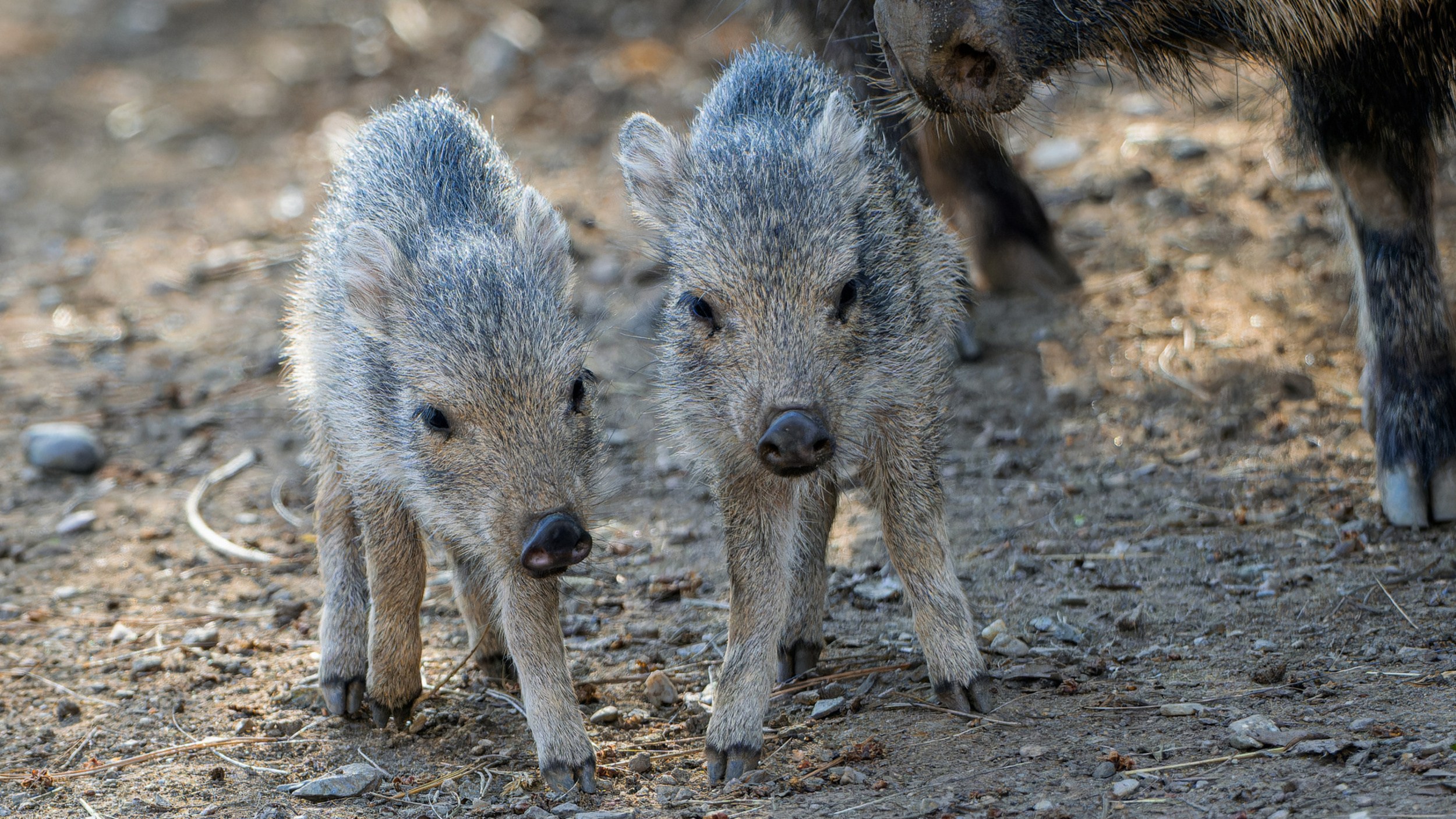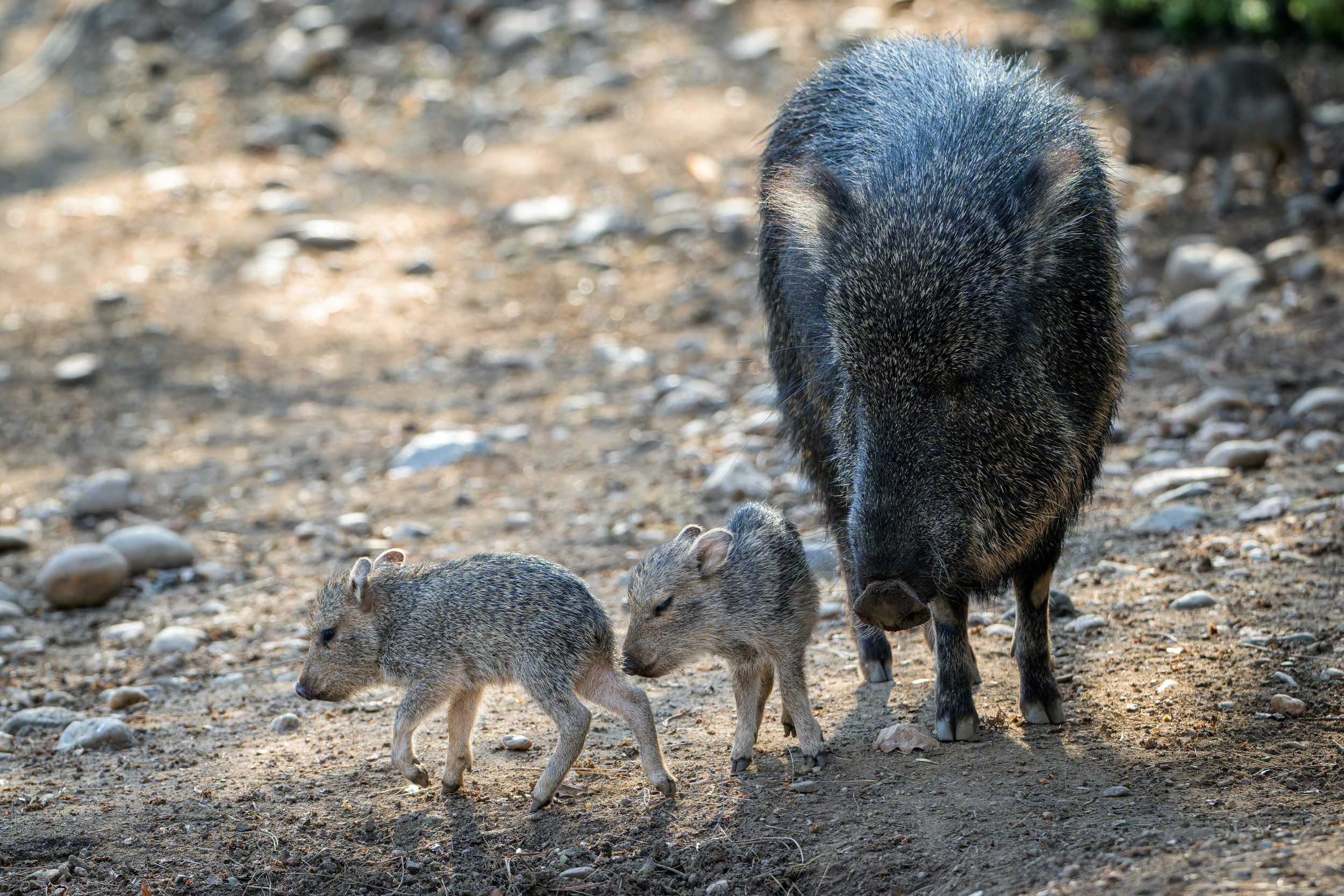Endangered Chacoan Peccary Triplets Born at Prague Zoo
21. 04. 2025
For the first time in the zoo’s history, Prague Zoo’s visitors can see Chacoan peccary triplets. By the seventies it was thought that, due to deforestation, they had become extinct. In fact only prehistoric specimens could be seen. Today, there are just a few thousand of them surviving in their South American homeland. Which means every piglet is great news, and not just for European breeding. In 2019, Prague Zoo became the third zoo in Europe to breed this species, which, incidentally, has very strong family ties.

People most often see the Chacoan peccaries as they bask in the sun in their enclosure in the Plains exhibit. Photo Petr Hamerník, Prague Zoo
The cinnamon-brown piglets are in very good health. As well as the mother, the entire group, or singular, as pigs are called, looks after them. Jan Marek, Prague Zoo’s senior ungulate breeder, said, “They often lie between the adults, or even on their backs. The entire group looks after the young. Peccaries also communicate with each other using a wide range of sounds and they fiercely defend their territory against intruders.”
In 1972, a population of chacoan peccaries, the most endangered of all peccaries, was discovered on the border of Argentina, Bolivia and Paraguay. Until then, only their fossil remains were known. Their role on the South American continent is similar to their Suidae relatives in Eurasia and Africa. Unlike them, however, they can make their fur stand up, which makes them look larger to threaten predators.

Like other young mammals, the Chacoan peccary piglets spend most of their time drinking milk, sleeping and learning how to behave in the singular. Photo Petr Hamerník, Prague Zoo
Prague Zoo has been breeding the Chacoan peccary since 2016. That was also the year it began supporting El Centro Chaqueño para la Conservación e Investigación (CCCI), a Paraguayan non-governmental organization that aims to conserve this rare species in its natural habitat in the Gran Chaco region.
The new additions, born on March 26th, are still staying by their mum and only drink milk. In a couple of weeks, they will start feasting on celery, lettuce, beets and potatoes with the adults. They will also start to become more independent and explore the enclosure.








